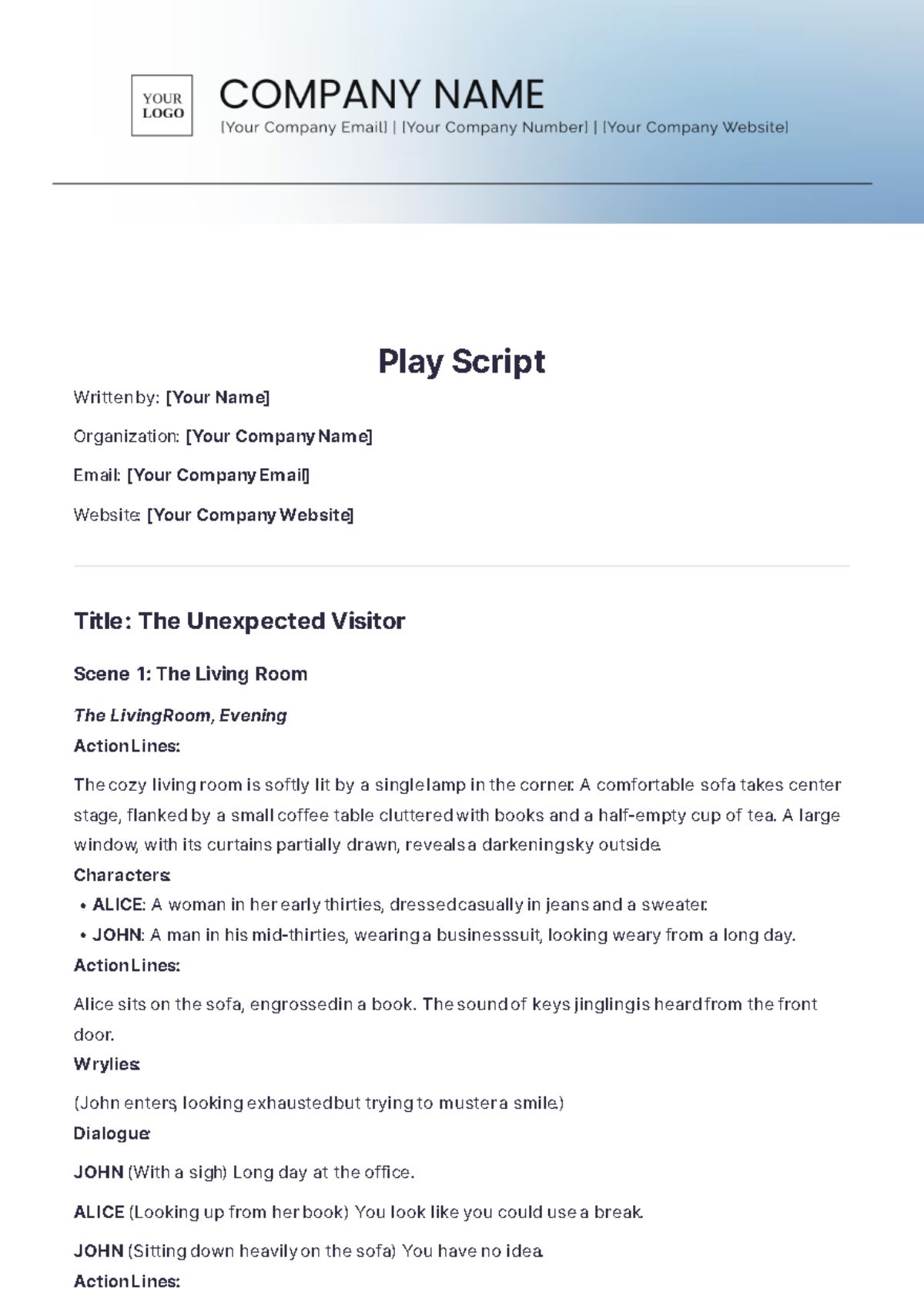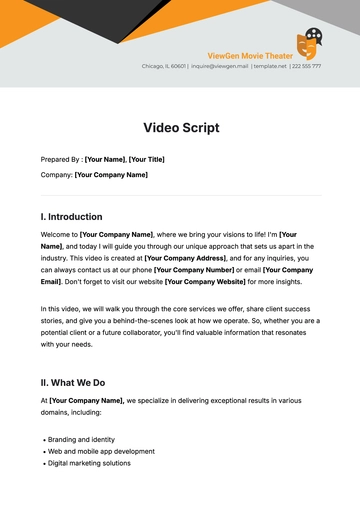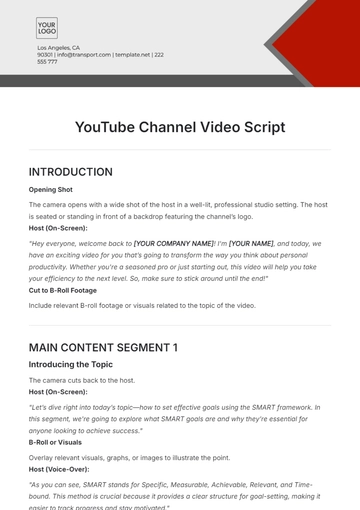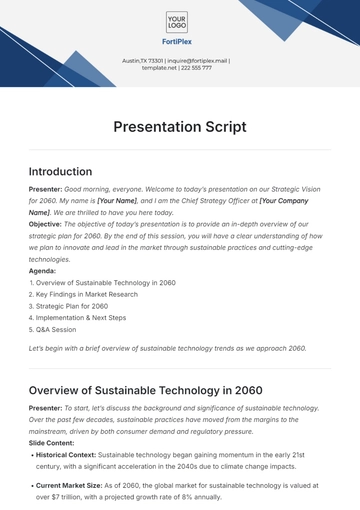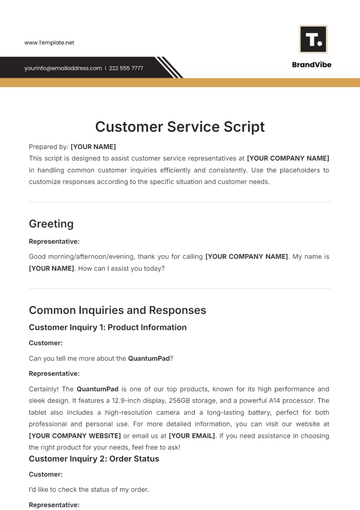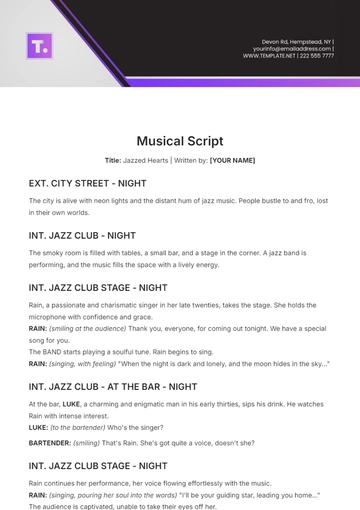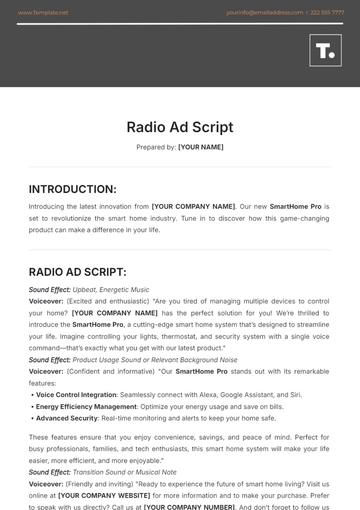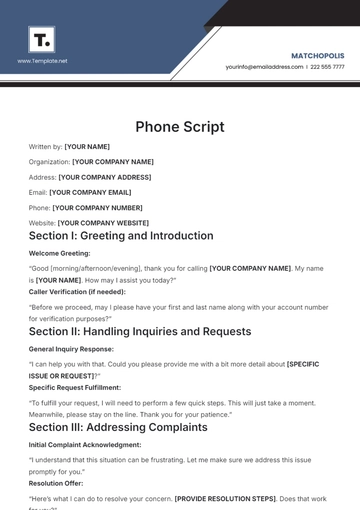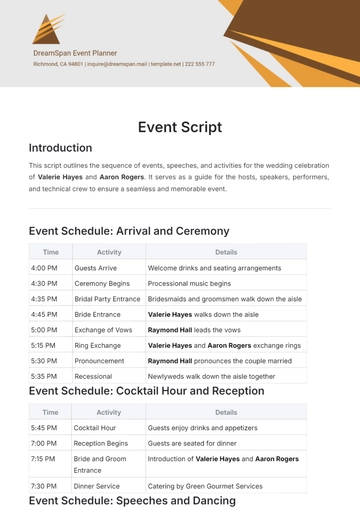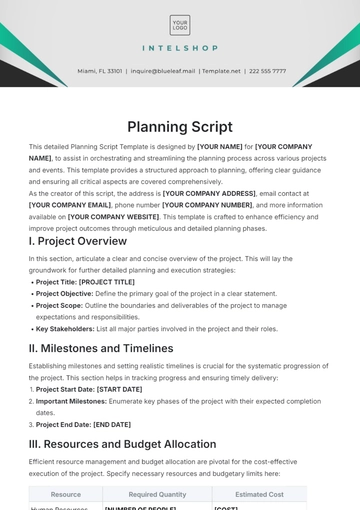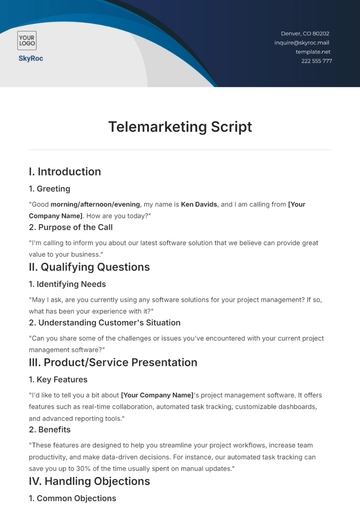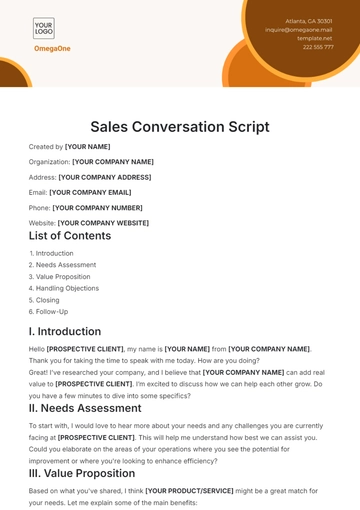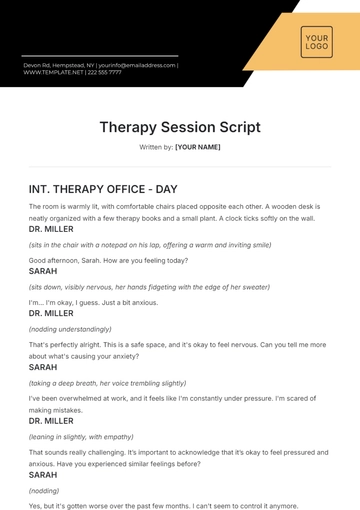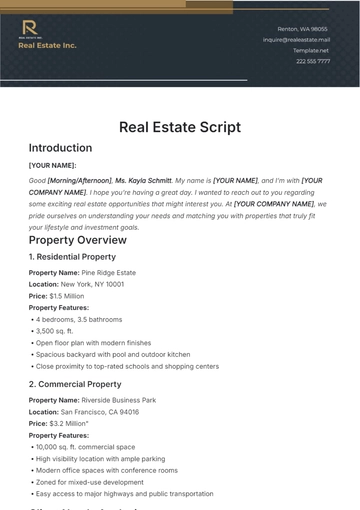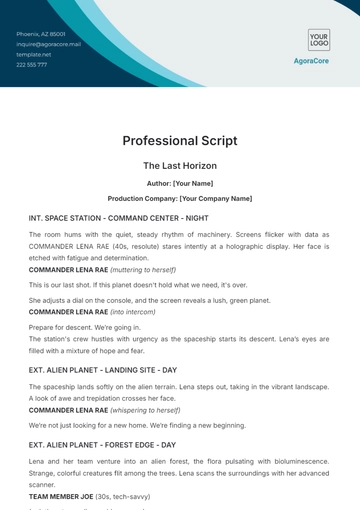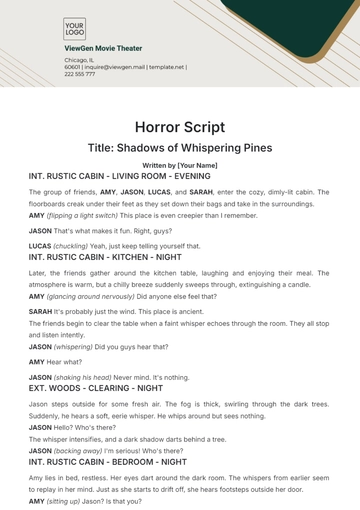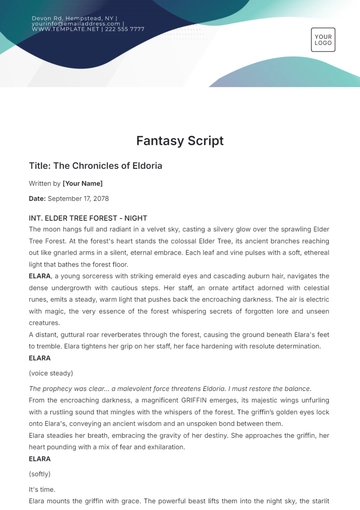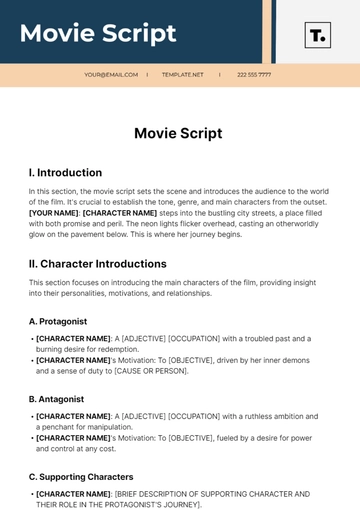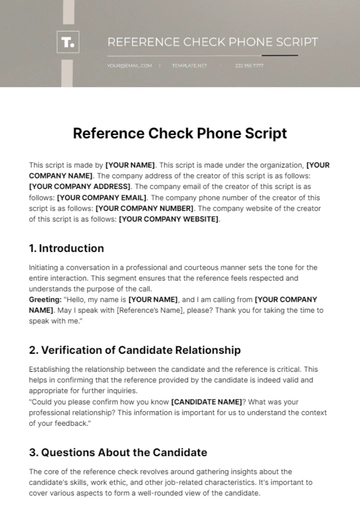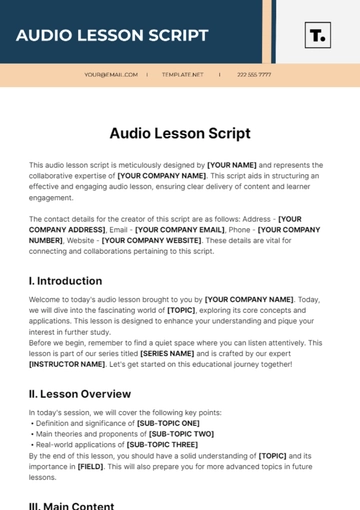Play Script
Written by: [Your Name]
Organization: [Your Company Name]
Email: [Your Company Email]
Website: [Your Company Website]
Title: The Unexpected Visitor
Scene 1: The Living Room
The Living Room, Evening
Action Lines:
The cozy living room is softly lit by a single lamp in the corner. A comfortable sofa takes center stage, flanked by a small coffee table cluttered with books and a half-empty cup of tea. A large window, with its curtains partially drawn, reveals a darkening sky outside.
Characters:
ALICE: A woman in her early thirties, dressed casually in jeans and a sweater.
JOHN: A man in his mid-thirties, wearing a business suit, looking weary from a long day.
Action Lines:
Alice sits on the sofa, engrossed in a book. The sound of keys jingling is heard from the front door.
Wrylies:
(John enters, looking exhausted but trying to muster a smile.)
Dialogue:
JOHN (With a sigh) Long day at the office.
ALICE (Looking up from her book) You look like you could use a break.
JOHN (Sitting down heavily on the sofa) You have no idea.
Action Lines:
Alice sets her book aside and moves closer to John, placing a comforting hand on his shoulder. The tension in the room is palpable as John leans back, closing his eyes.
Wrylies:
(There's a brief, tense silence before John speaks again, his voice softer.)
Dialogue:
JOHN (Softly) Something happened today.
ALICE (Concerned) What is it?
Action Lines:
John hesitates, glancing towards the window as if searching for the right words.
Scene 2: The Office
John's Office, Morning
Action Lines:
The office is neat and orderly, with a large desk covered in papers and a computer. The sun is just beginning to rise, casting a golden hue through the blinds. John sits at his desk, typing furiously on his keyboard.
Characters:
JOHN: Now wearing a more relaxed outfit, a shirt and trousers.
MR. BROWN: John's boss, an older man with a stern expression.
Action Lines:
Mr. Brown enters the office, his footsteps echoing in the quiet room.
Wrylies:
(John looks up, startled, as Mr. Brown approaches.)
Dialogue:
MR. BROWN (Sternly) We need to talk about the Henderson account.
JOHN (Nervously) Yes, sir. I've been working on it all night.
Action Lines:
Mr. Brown places a hand on the desk, leaning in closer to John.
Wrylies:
(His voice lowers, almost a whisper, as he speaks.)
Dialogue:
MR. BROWN (Softly) I hope you understand the importance of this project.
JOHN (Determined) I do, sir. I won't let you down.
Action Lines:
Mr. Brown straightens up, giving John a curt nod before turning to leave. John exhales deeply, the weight of the conversation hanging over him as he returns to his work.
Scene 3: The Park
The Park, Afternoon
Action Lines:
A picturesque park with lush greenery and a serene lake in the center. Birds chirp in the trees, and children are playing in the distance. Alice and John walk along a winding path, holding hands.
Characters:
ALICE: Wearing a light summer dress, looking relaxed and happy.
JOHN: Dressed casually, his demeanor lighter than before.
Action Lines:
They stop at a bench overlooking the lake, sitting down to enjoy the view.
Wrylies:
(Alice turns to John, her expression serious.)
Dialogue:
ALICE (Softly) You seemed different last night. What happened at work?
JOHN (Sighing) It's just... a lot of pressure. Mr. Brown is really on my case about this account.
Action Lines:
Alice takes John's hand, squeezing it gently.
Wrylies:
(She speaks with a reassuring tone.)
Dialogue:
ALICE (Reassuringly) You'll get through this. I believe in you.
Action Lines:
John smiles, the tension easing from his face. They sit in comfortable silence, watching the ducks swim across the lake.
Script Templates @ Template.net
